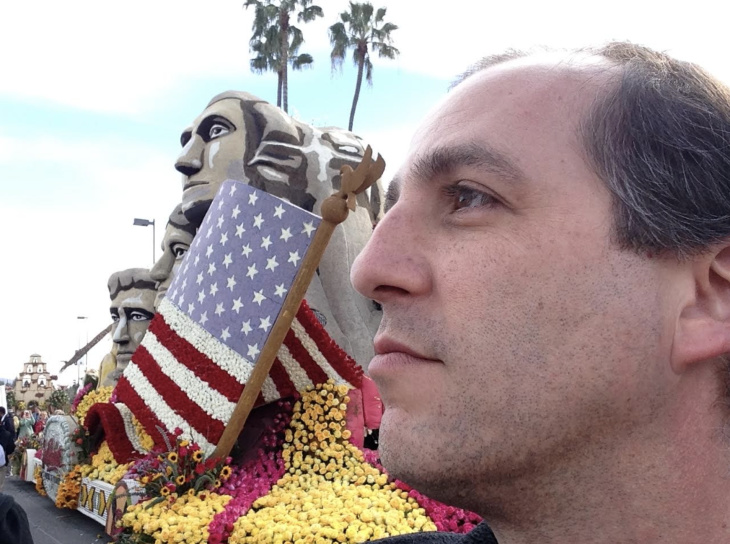half mexican half white
 Why are half of Latino immigrant TV characters portrayed as criminals? | US television | The Guardian
Why are half of Latino immigrant TV characters portrayed as criminals? | US television | The GuardianNumbers, facts and trends that shape your social and demographic world TrendsSocial & Demographic TrendsChapter 7: The Many Dimensions of Hispanic Race Identity For Hispanics living in the United States, Hispanic identity is multidimensional and multifaceted. For some, it is defined more by the country of origin of its family, such as Mexican, Cuban or Dominican. For others, it is defined by pan-ethnic terms such as Hispanics or Latinos, emphasizing the communalities of a diverse community. At 54 million, Hispanics account for 17 per cent of the national population, and 29 per cent of the U.S. population is expected to grow by 2060, according to the Census Bureau. Between 1990 and 2013, the Hispanic population of the nation grew faster than any other racial or ethnic group. The measurement of racial identity among Hispanics has proved difficult for the Census Bureau. At present, the Hispanic category is described in census survey forms as ethnic origin rather than as race. He is asked separately from the issue of race, a practice also followed by many other surveys. But when it comes to their racial identity, Latinos stand out from other Americans in their responses to racial questions. For example, when asked about their race in the census and survey forms of the Census Bureau, many Latinos do not choose one of the standard racial classifications offered. Instead, more than any other group, Latinos say that their race is "some other race," mainly by writing in answers such as "Mexican", "Hispanica" or "Latin American". 37% of Latinos did this in the 2010 census, as did 42% in the 2000 census. This is also the case of the Pew Research Center polls of Latinos. In the 2014 National Latino Survey, 25% of Latinos volunteered to make their race "Hispanic" or "Latin" and not one of the standard racial classification groups. Hispanic responses to the 2010 and 2000 census pose a major question: Do Hispanics consider their Hispanic background to be part of their racial origin, ethnicity or both? According to the Pew Research survey, 11% of Hispanic adults say that their Hispanic origin is part of their racial origin, 19% consider it part of their ethnic origin and 56% consider it part of their racial and ethnic background. Together, two thirds (67%) of Hispanic adults describe their Hispanic background as part of their racial background. This finding has implications for how multiracial Latinos are identified. For example, Latinos who identify themselves as a race (such as black or white) when asked to conform to the country's current standard racial categorization, but then say they consider being Latino as part of their racial origin as well, have effectively indicated a multiracial fund. That makes this group of Latinos potentially part of the mixed race population. Taking this broader view of the multi-racial population, including Latinos who give a census race, and also consider that their part of the Latin background of their race would increase the participation of the American multiracial population to 8.9% of 6.9%. This chapter incorporates this broader approach to Hispanic racial identity, exploring two possible ways of defining and seeing mixed-fund definitions among Hispanics: (1) those who say they are two census races (i.e., black and white) and are also Hispanic, a treated group consistently as multiracial throughout the report; and (2) those who name one race (except Hispanic), but also say they consider their Hispanic background to be a racial part. The chapter also explores other Hispanic racial identities, such as an Afro-Latin background and a fund that includes roots among the indigenous peoples of the Americas, such as the native Americans, Mayas, Taino or Quechua. These latest findings come from the 2014 Pew Research Center's National Latino Survey. I've never identified as a single race. I think that would be partly insulting my parents because I would leave one or the other out. White woman and Hispanic, 23 years I've never identified as a single race. I think that would be partly insulting my parents because I would leave one or the other out. White woman and Hispanic, age 23Who considers to be a Hispanic race? Through age groups, educational levels and linguistic preferences, most American Hispanics consider their Hispanic formation a part of their racial makeup. For example, 69 per cent of Latinos aged 18 to 29 say that their Hispanic origin is part of their racial origin, as well as 68 per cent of those ages from 30 to 49 years, 63 per cent of those ages from 50 to 64 years and 66 per cent of those ages from 65 years or older. Similarly, Hispanics who are dominant in Spanish (67%) are as prone as bilingual (71%) and Hispanics of English domain (66%) to consider their Hispanic formation part of their racial origin. Actions are similar by gender and at all levels of educational performance: Most Hispanics in each group consider their Hispanic origin as part of their racial origin. Identifying multi-racial Hispanics As noted, multi-racial identity among Hispanics can be defined in two ways. The first definition coincides with the one used throughout this report: multiracial adults are those who say the racial origin of themselves, their parents or their grandparents include two or more census races, regardless of whether they see their Hispanic origin as a race. By this definition, 4.6% of adults who are Hispanic (or have a Hispanic father or grandfather) have a multiracial fund. The second multiracial definition includes those who say that their Hispanic origin is part of their racial origin and that they indicate that their background also includes another census race (such as black or black or Asian). 12.1% of Hispanic adults are multiracial by this addition. In addition to those who qualify as multiracial under the first definition, 16.7 percent of all Hispanic adults in total would then be identified as having a multiracial fund. Among the Hispanic multiracial group that is a census race and considers its Hispanic history to be their race, a vast majority (79%) say their racial origin is white and Hispanic. The multiracial experience and Latin identityMultiracial is not only a reflection of the racial background in the family tree, but also a reflection of the social and cultural factors that shape how it was raised, how it looks and how the world sees it. For many mixed-race Hispanics, these factors can be as important as racial origin to configure their racial identity. Do Hispanics with multiple race history Consider them to be the mixed race? Although many Hispanics report having a multiracial fund, many may not consider themselves as a mixed race. For example, among Hispanic adults who have a multiracial fund based on reporting two or more census careers, 35% say they are not considered mixed race. And among Hispanic adults who consider that their Hispanic formation is part of their racial origin and also indicate a census race in their background, 50% say they are not considered mixed race. In comparison, a higher proportion of non-Hispanic multiracial adults, 64 per cent, say that they are not considered mixed race. How multi-racial Hispanics Think Others See How Do Mixed Hispanic Adults Believe That Strange People Passing On Street See Their Racial Origin? As noted above, this is one of the many ways in which the views of racial identity can be formed. For Hispanic multiracial adults, the answer depends on how your multiracial fund is defined. However, no matter how it is defined, few Hispanic mixed race say they are seen as multiracial. For example, between multiracial Hispanics who indicate their background include two or more census races, 30% say that most people would think they were white if they were passed on the street. An additional 24 percent say that most people would see them as Hispanics, 17% as mixed race, 10% as black only and 4% as American Indian only. However, for multiracial Hispanics who choose a census race, but say they consider their Hispanic backgrounds also part of their racial origin, the survey findings are very different. About half of these multi-racial Hispanics (48%) say that most people would think they were Hispanic if they were passing through the street. An additional 38% says it would be seen as white by most people, and only 8% say they would be seen as mixed race. About half of this group (48%) chooses white when asked about their own race, so it is not surprising that about four in ten think others see them as white. By comparison, 55% of non-Hispanic multiracial adults say that most people would think they are white if they were passed through the street, 26% say they would be seen as black by most people, 8% as mixed race and only 3% as Hispanics. But these findings vary between non-Hispanic multiracial adults. For example, among non-Hispanic biracial adults who are white and black, 61% say that most people would think that they are single-race blacks if they were passing through the street. In contrast, between non-Hispanic biracial adults who are white and American Indians, 88% say that most people would think they are white. Is a multiracial fund an advantage or a disadvantage? Like other multi-racial adults, multi-racial Hispanic adults are much more likely to say that having a racial background that includes more than one race has been an advantage in their lives than saying it has been a disadvantage. However, about half or more say it has not made a difference. About a third (32%) of Hispanic adults who are multiracial because their background has two or more census races say their racial formation has been primarily an advantage. A similar part (33%) says the same among Hispanics who consider their Hispanic background of racial origin and also name another census race in their background. This is almost twice the share (18%) of non-Hispanic multiracial adults who say the same. On the contrary, about one in six (15%) Hispanic adults who are multiracial by two or more census races say their multiracial fund has been primarily a disadvantage. Among Hispanic adults who consider their Hispanic formation part of their racial origin and are also called another census race in their background, 5% say it has been a disadvantage in their lives. On the contrary, among non-Hispanic multi-racial adults, only 3 percent say their multiracial fund has been primarily a disadvantage. More Hispanic Multi-racial adults have felt pride in their background Compared to other mixed-race adults, Hispanic multi-racial adults who are two or more races are more likely to say that they have "often" or "sometimes" felt proud of their mixed race history – 76% say this. This is a higher part than that of Hispanic adults who consider their Hispanic background a career and also report another race (62%). Among non-Hispanic multiracial adults, 58 per cent say they have been proud of their mixed race formation. And through the two different groups of multiracial Hispanic adults, few say they have been ashamed of their mixed race history. Only 13% of Hispanics whose background includes two or more census careers say this, as well as 10% of Hispanics who consider their Hispanic origin a career and also indicate a census career, and 8% of non-Hispanic multiracial adults. Ask Hispanics about racial identities beyond census classifications In the previous sections, we look at what it would mean to consider a Hispanic background a race. This reflects what many Hispanics write on the 10-year census form and other surveys when they enter "Hispanic" or "Latin" or a Hispanic (such as Mexican) origin when asked to provide their race. It also leads around one in six Hispanics being identified as a mixed race, although many would not adopt that term to describe themselves. But another recent work by the Pew Research Center suggests that even this broader approach to race does not capture the full depth and wide spectrum of views that Hispanics have of their own racial identity. This is due in part to the grouping of diverse communities and nationalities in a single group masks many of the differences between them. In the 2014 National Latino Survey (NSL), we approach the views of Latinos on race with an eye to the specific forms that national and regional origin affects this vision. Specifically, in that autumn 2014 survey of 1,520 Latino adults, we asked about the racial background in three ways whether they consider themselves Afro-Latin or Afro-Caribbean or, for example, Afro-Mexican. We also ask Latinos if their background includes roots among the indigenous peoples of the Americas, such as native Americans, Mayas, Quechuas or Taino. Finally, we also explore the mixed race identity among Latinos using mixed race terms such as mestizo or mulatto, terms used in countries such as Mexico to capture mixed indigenous and European heritage. We asked the respondents about their own fund and that of their parents and grandparents. How did the 2014 National Latino Survey on Other Racial Identities ask* Examples provided vary according to the country or region of origin of the respondent.Note: For more details on these questions and the exact phrase, see 2014 National Survey of Latinos topline in Appendix D.When asked directly about their mixed breed fund, approximately one in three (34%) Latino adults say that they are considered mixed race — defined as belonging to more than one racial group, such as mixed, mulatto or other. This is more than five times the part of Latinos (6%) that indicate two or more races or volunteers that are "mixed race" when asked to describe their career and tells them that they can select as many races as they apply. In another way, between 34% of Latinos who identify themselves as a mixed race, mixed race or mulatto, only 13% also indicate a racial background with two or more races or volunteers who were "mixed race" in the standard race issue. About half (46%) of this group indicates their race or one of their races is white, and 24% voluntary that their race or one of their races is Hispanic or Latino. Totally 42% choose white as their only race, and 20% choose Hispanic as their only race. The NSL also finds that one-in-four (25%) Latin adults say they are considered indigenous or Native Americans, such as Maya, Nahua, Taino, Quiche, Aymara or Quechua, among others. But here too, this part is greater than 2% of Latinos who are offered as indigenous or Native Americans on the issue of the NSL standard race. And he looked differently, among Latinos who say they are considered indigenous or Native Americans when they are directly made, only 5% volunteer their race or one of their races as American native on the issue of the standard race, while 41% indicate white as their race or one of their races and 30% volunteer their race as Hispanic or Latino alone or in combination. Once again, a relatively high proportion of this group (36%) chooses the target only to describe its race, and about a quarter (27%) chooses Hispanic alone. Finally, the survey found that about one in four (24%) Latino adults consider themselves as Afro-Latin, Afro-Caribbean or other Afro-Latin origin, as Afro-Colombian or Afro-Mexican. In comparison, only 8% of Latino adults indicated that their race or one of their races was black on the standard issue of the NSL race. And here too, Latinos who say they are Afro-Latin do not necessarily indicate that they are black on the issue of the standard race. For example, among this group, 18% say that their race or one of their races is black in the standard issue of the NSL race, but 39% say that their race is white alone or in combination and 24% Hispanic or Latino volunteer as their race or one of their races. By considering these racial identities through grandparents, the proportion of Latino adults increases with these backgrounds. Latin adults of four in ten (40%) are considered mixed race or have a mixed father or grandfather, up to 34% when the defendant's fund is considered only. One third (33%) are considered indigenous or have an indigenous father or grandfather, up to 25% when the defendant's fund is considered only. And 29% consider themselves Afro-Latin or have an Afro-Latin father or grandfather, up to 24% when based on the defendant only. These results showed light on the multidimensionality of racial identity among Latinos and the challenges to grasping the Hispanic racial identity through a standard race issue. The 2014 National Latinos (NSL) Survey identified Hispanic mixed race in two ways. On the one hand, the NSL directly asked Hispanic adults whether they were considered a mixed race, as mentioned in the chapter and in the box in this chapter. On the other hand, the NSL included the Pew Research Center's standard race question for phone interviews, which allowed multiple responses to race and also allowed respondents to offer their career as Hispanic/Latin or mixed race. He also captured any other racial response given by the interviewee. Based on the standard Pew Research question, Hispanics identified as mixed race include Latinos who volunteered to be "mixed race", "mestizo", "mulatto" or some other mixed race or gave two answers (including "Some other race" without specifying what race "Hispanic or Latino" or a Hispanic origin like their race) to the standard NSL race question. Which of the following describes your career? You can select as many as apply... White, black or African American, Asian or Asian American or some other race. 1 White (e.g. Caucasian, European, Irish, Italian, Arabic, Middle East) 2 Black or African-American (e.g. black, Kenyan, Nigerian, Haitian) 3 Asian or Asian-American (e.g., Asian Indian, Chinese, Filipino, Vietnamese or other Asian origin groups) 4 Another race (SPECIFY) ____________________________________________________________________________________________________________________________________________________________________________________________________________________________________________________________________________________________________________________________________________________________________________________________________________________________________________________________________________________________________________________________________________________________________________________________________________________________________________________________________________________________________________________________________________________ If necessary: What race or race is that?) 5 (NO READ) Mixed race 6 Hispanic/Latin (SPECIFY _______) 7 (NO READ) Native American/American Indian/Alaska Native 8 Pacific Islander/Native Hawaiian D I don't know. R (NO READ) Rejected (e.g. non-racial responses such as American, Human, Purple) Interviewers accepted up to four responses. They were encoded in the respective categories on Pew Research instructions and recorded literal responses to mention "Some other race" and "Hispanic or Latino." The survey provider (SSRS) and Pew Research Center reviewed and verified these classifications and corrected some responses to the issue of race as needed. Using this procedure, mixed-gen Hispanics identified in the NSL race issue may include people who said they were "white and Mexican" or "negros and Latino and Dominican" or "Irish and Mexican." Hispanic combinations of origin as "Puerto Rica and Cuba" are not considered as mixed race. In some cases, when a literal response captured by interviewers was unclear, Pew Research used other survey questions, such as whether people were considered mixed race (Q54) and whether the respondent had a mixed Hispanic and non-Hispanic background through their parents and grandparents (Q52a, Q52b and Q53) to classify them as mixed race or not. For more information on the survey methodology, see SIGN Up for OUR WEEKLY NEWSLETTERMAKE A FINANCIAL CONTRIBUTION TO SUPPORT OUR WORKReport MaterialsRelated Issues 1615 L St. NW, Suite 800Washington, DC 20036USA Pew Research Center is a non-partisan data tank that informs the public about the issues, attitudes and trends that make up the world. Conducts public opinion surveys, demographic research, media content analysis and other empirical research on social sciences. Pew Research Center does not take policy positions. It is a subsidiary of . To complete the subscription process, please click on the link in the email we just sent.

I Ain't White: Confessions of a Mixed-Race Xicana | by Heinemann Publishing | Medium

10 Mixed Heritage People on What Being Latinx Means to Them | Teen Vogue

15 Photos That Show What Being Asian-American Looks Like | Teen Vogue

Is being Hispanic a matter of race, ethnicity or both? | Pew Research Center

El Paso shooting: suspect confesses to targeting Mexicans, officials say | El Paso shooting | The Guardian
From Two Worlds, De Dos Mundos ‹ Pepperdine Graphic

On Raising Bi-Racial Children - Momentous Institute

I Will Never Be German': Immigrants and Mixed-Race Families in Germany on the Struggle to Belong - The New York Times

Mexican woman tires of sister's prejudice against her white boyfriend

15 Photos That Show What Being Asian-American Looks Like | Teen Vogue

Louis C.K.: I'm an Accidental White Person - Rolling Stone
:format(png)/cdn.vox-cdn.com/uploads/chorus_image/image/50543087/Screen_20Shot_202016-08-26_20at_204.36.11_20PM.0.png)
Latino and Hispanic identities aren't the same. They're also not racial groups. - Vox

On Raising Bi-Racial Children - Momentous Institute

Forgotten, cast aside: being a minority in a Mexican neighborhood - Boyle Heights Beat

The mixed-race experience: 'There are times I feel like the odd one out' | Photography | The Guardian

my father and i. im half mexican half white, but i still somehow came out with red hair and very white skin. nobody believes im half hispanic until they meet my dad... :

James Luna: Take a Picture with a Real Indian - - Exhibitions - Garth Greenan Gallery

Less than half of US children under 15 are white, census shows

Mexican Archives - The Race Card Project

When You Are 'Half White And Half Mexican,' Checking Off Those Racial Identity Boxes Isn't Easy

'I'm a half-Mexican, half-white, brown-skinned man named Ryan Christopher Jones': A photographer's visual journey into his heritage - The Washington Post

Hispanic/white pictures - Blended and Multicultural Families | Mexican asian baby, White and mexican babies, Mexican babies

Mothering Latinas When You're Not a Latina - Haute In Texas

The mixed-race experience: 'There are times I feel like the odd one out' | Photography | The Guardian

I'm a half-Mexican, half-white, brown-skinned man named Ryan Christopher Jones': A photographer's visual journey into his heritage - The Washington Post

I'm Kat, and I am half-white, half-Mexican. By looking at me, many people assume I am just white. I e… | White and mexican babies, Mexican babies, Baby onsies funny

Mexican Archives - The Race Card Project

15 Photos That Show What Being Asian-American Looks Like | Teen Vogue

What It's Like to Be a White Latina | POPSUGAR Latina

My future bb | Mexican babies, Mexican baby girl, Hispanic babies

Thursday, April 5, 2018 – Remembering James Luna » Native America Calling

White Mexicans - Wikipedia

Meghan Markle On Her Biracial Identity - Actress Meghan Markle Discusses Being Half Black Half White
On Raising Bi-Racial Children - Momentous Institute

15 Celebrities You Had No Idea Were Latinx

New Mexican Covers Half the Story on Methane | New Mexico Oil & Gas Association

10 Mixed Heritage People on What Being Latinx Means to Them | Teen Vogue

Struggles Of Growing Up 1/2 White 1/2 Hispanic - YouTube

Half Mexican, Half White - I was a bit surprised by my results but it was fairly accurate to my family's oral origin histories! : AncestryDNA
Posting Komentar untuk "half mexican half white"